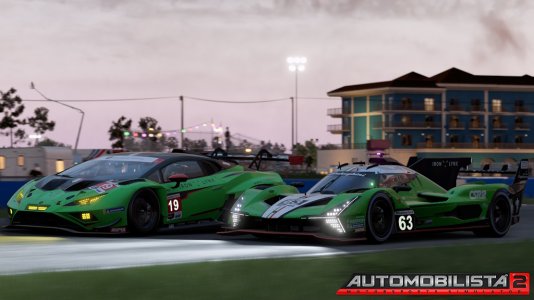ya my bad for thinking this stuff should be pretty obvious... here we go then, sit down and enjoy a dynamics 101 lesson:
RPM is a measure of VELOCITY.. just as km/h or m/s... RPM is the velocity at which the engine is rotating.
Gas pedal influences the amount of fuel (and obviously other things like air opening and fuel mixture) that goes into the engine and that result in TORQUE.
TORQUE is is a FORCE.
FORCE generates ACCELERATION.
ACCELERATION over time generates VELOCITY.
So let's start very simple, how much force is needed to accelerate a cube to 10 km/h ?
ANSWER:
Any force >0 will do , so given enough time, even a force of 0.00000000000000000000000000000000000001 in whatever units you want is going to give us, eventually, a velocity of 10 km/h.
This is obviously counter intuitive here on planet earth but it's totally true in space, that's actually the reasoning behind things like solar sails.. the idea is exactly that, it doesn't matter how much force you can generate, even a very small one over a long period of times will give you astonishing velocity.
Here in earth tho, we have to deal with all sort of frictions that will try to slow down every moving object to an halt... there are different kind of frictions, to simplify we can say that the friction that comes from air and liquid is dependent on speed (ie.. the faster you go, the bigger is the force trying to stop you).. and the one that comes from contacts (ie. tyres or scraping against a wall) that is more constant regardless of speed.
So once the basics are covered let's consider our car engine.
This is an engine that is able to produce enough torque to get a 1000+Kg vehicle and all it's rotating parts (gearbox, diffs, wheels) up to whatever max speed it can by resisting air resistance that is trying to slow it down... so after all, it must be pretty damn powerful right?
So how much of this power is really needed to get just the engine up to its maximum speed?
An engine with disengaged clutch only has to overcome frictions coming from the engine itself.. and those frictions will also be there when the car is in motion.
So, if an engine would need max power just to make it to max RPM with disengaged clutch.. would it be able to get to max rpm once the entire drivetrain is engaged and the actual car is moving?
So what amount of torque the engine really needs to produce in order to get to max rpm? Just enough to overcome the friction in the engine itself. Being and engine a kind of "air pump", internal frictions are mostly coming from compressing air, so they are velocity dependent (ie.. the faster the engine goes the more friction there will be).. this what we identify as "engine brake torque"... it's much higher if the engine is at high RPM right?
But we are still talking about a fraction of what the engine needs to overcome in order to move the entire car and the rest of the drivetrain.
So finally, does the engine need FULL POWER to simply overcome the internal frictions? Obviously not.. or, as Phil suggested, if you are not convinced and you still think that since RPM max is hit with 25% gas max power is obtained at 25% gas.. go on and drive with 25% gas and see how fast you'll go around a track.
To make it brutally simple, RPM is NOT a measure of power, is a measure of velocity and has no (independent) relationship whatsoever with the amount of power an engine has or hasn't. At the end is simply an equilibrium between engine torques and friction torques.. as long as engine>friction the rpm will go up.
oh and btw.. this has nothing to do with "customer support".. unless you expect the head of a studio to give physics lessons to somebody reporting a "bug" because his Mustang in game can't pull 4 lateral G in a corner.










